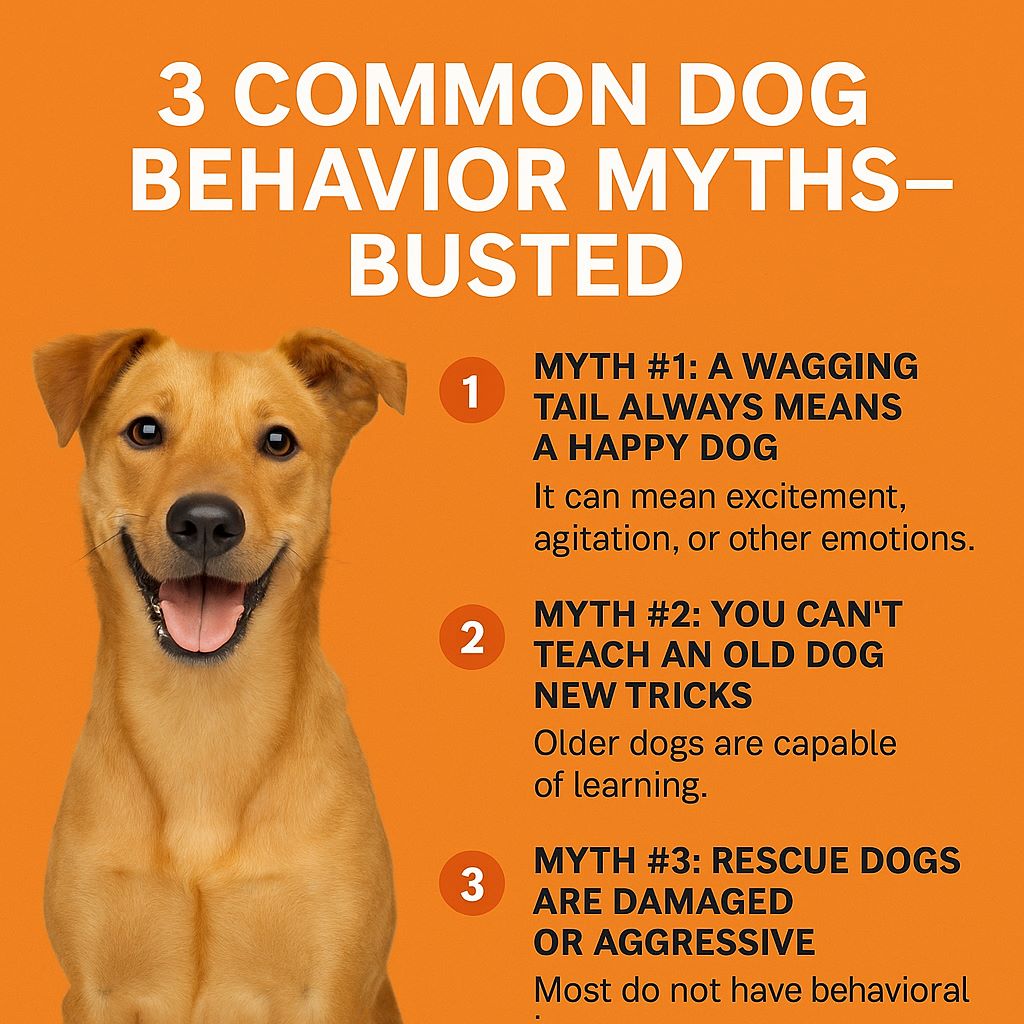🐶 5 Common Dog Behavior Myths—Busted
By One Love Animal Rescue
Keywords: dog behavior myths, dog training facts, misunderstood dog behavior, rescue dog behavior
If you’ve ever owned a dog—or are thinking about adopting one—you’ve probably heard a few things like: “A wagging tail means they’re happy,” or “You can’t teach an old dog new tricks.”
At One Love Animal Rescue, we hear these myths all the time, and the truth is… they’re often wrong! Misinformation can lead to misunderstandings, missed connections, or even failed adoptions.
So let’s set the record straight. Here are 5 of the most common dog behavior myths—and the real truth behind them.
🐾 Myth #1: A Wagging Tail Always Means a Happy Dog
Busted: While tail wagging can mean a dog is happy, it actually signals arousal or excitement, not necessarily joy.
A stiff, high tail wag might mean a dog is on alert—or even agitated. Meanwhile, a low, loose wag (especially with a wiggly butt!) usually signals friendliness.
👉 Tip: Look at the dog’s entire body language, not just the tail.
🐾 Myth #2: You Can’t Teach an Old Dog New Tricks
Busted: Older dogs are very capable of learning—they just need patience and consistency.
In fact, senior dogs often focus better than puppies and have calmer energy. We’ve seen many adult rescues at One Love learn new commands, adapt to routines, and bond beautifully with adopters.
🐾 Myth #3: Rescue Dogs Are Damaged or Aggressive
Busted: This is one of the most harmful myths out there. Rescue dogs come from many backgrounds—some were simply lost, surrendered, or never given a chance.
Aggression is not caused by being in a shelter. It’s typically due to fear, lack of training, or past trauma—and all of those can be addressed with the right care and support.
👉 Many of our most loyal, gentle dogs were once overlooked simply because of this myth.
🐾 Myth #4: My Dog Knows What They Did Wrong
Busted: Dogs don’t feel guilt the way humans do. That “guilty look” is actually a response to your tone, posture, or behavior.
Punishing a dog after the fact doesn’t teach them what they did wrong—it just makes them anxious or confused.
👉 Focus on positive reinforcement and setting them up for success instead.
🐾 Myth #5: One Breed Acts the Same Way Every Time
Busted: While breed tendencies exist (like herding in Border Collies or guarding in Shepherds), every dog is unique.
Behavior is shaped by genetics and environment—so a Pit Bull can be a snuggly couch potato, while a Lab may be anxious or reserved.
👉 Don’t judge a dog by the breed—get to know them.
💚 Real Understanding Builds Better Bonds
At One Love Animal Rescue, we believe that education leads to compassion. Understanding the truth about dog behavior helps people:
-
Build trust with rescue animals
-
Avoid giving up on pets for normal issues
-
Create happier, healthier relationships with their dogs
Ready to meet your next best friend? Check out our adoptable dogs or sign up to volunteer with our canine crew!
📬 Stay in the Loop
Like content like this?
Subscribe to our newsletter or follow us on Facebook, Instagram and Twitter for more pet tips, rescue stories, and upcoming adoption events.


